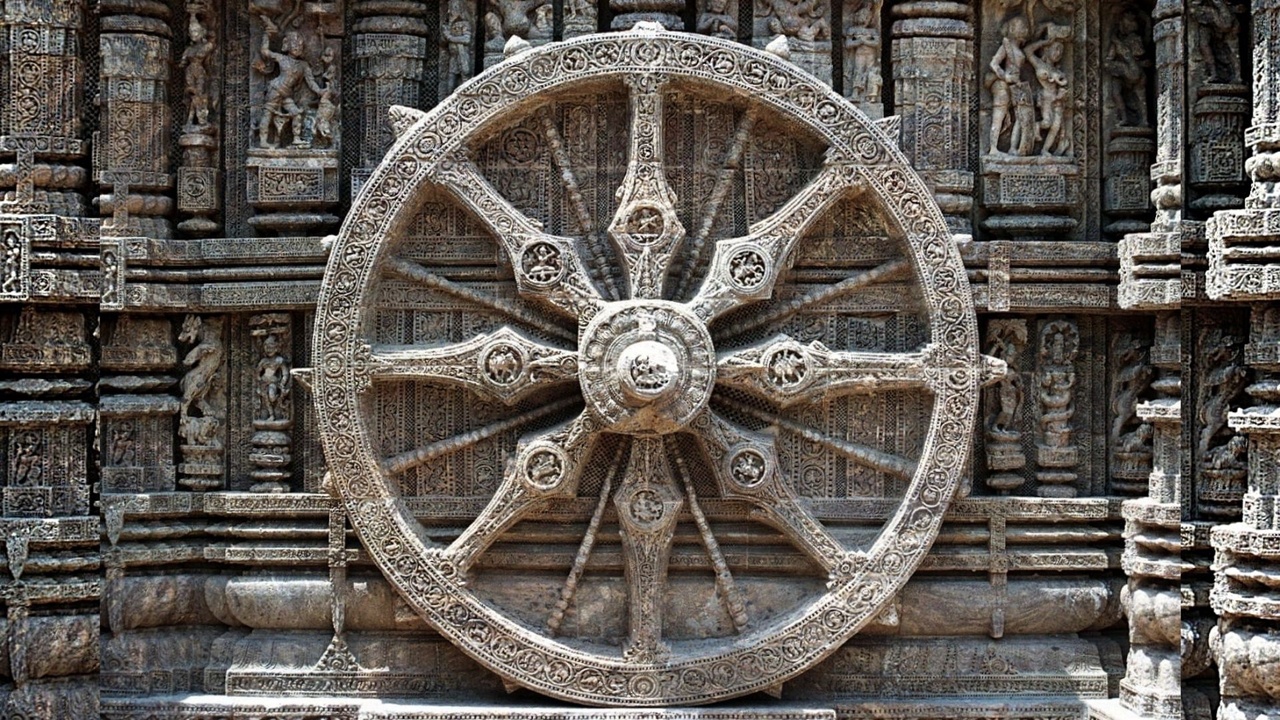Keep on Rolling
Jan 12, 2022
The dharmachakra, or wheel of dharma, is one of the most ancient symbols in Indian culture and one of the most well-known and important in the Buddhist tradition. Its even an emoji ☸️.
Dharma comes from the Sanskrit root dhr, meaning “that which upholds.” It’s often translated as right action or sacred duty.
Chakra means “wheel”. Here, the term has nothing to do with the energy centers in the subtle body.
The oldest known depictions of the dharmachakra are solar symbols that appear frequently on the clay seals of the Indus valley civilization dating back to 2500 BCE.
The symbolism of the dharmachakra varies. In Buddhism, the hub of the wheel represents the discipline of the seeker. The rim symbolizes concentration and meditation. The spokes represent different aspects of the Buddha’s teachings, depending on the number. For example, a wheel with eight spokes represents the Noble Eightfold Path.
In Jainism, it’s a symbol of nonviolence.
In the Hindu tradition, the dharmachakra is associated with Lord Vishnu, the sustaining and preserving power of the absolute. It also commonly appears in temples that honor Lord Surya, like this one, representing a wheel on the chariot of the Sun God (picture above).
The dharmachakra that appears in the center of the Indian flag is what’s known as an Ashoka Chakra. It has 24 spokes that represent aspects of Buddhism’s Four Noble Truths.
It’s an interesting exercise to adapt these traditional interpretations to examine the evolution of our lives. That’s what we’ll be doing in my upcoming workshop.
Over the years, the dharmachakra has been a helpful framework to consider cycles of my life, align with my personal dharma, and remember the hub of unchanging awareness that’s always at the center.
